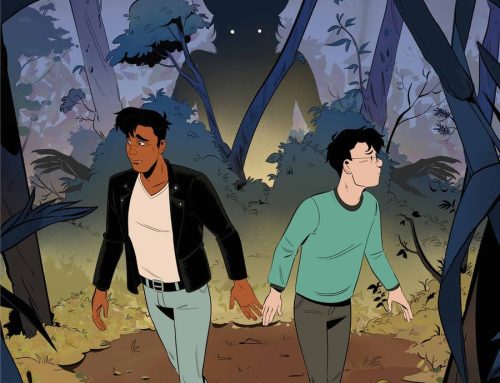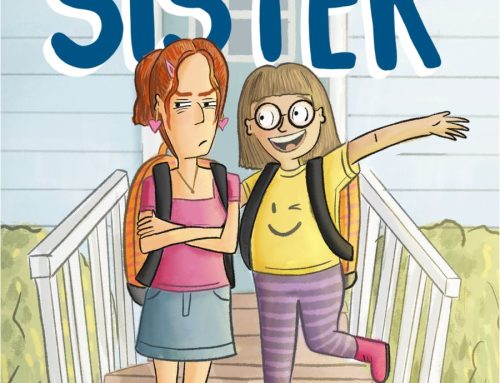test heading

What initially drew you to comics?
I’ve always been interested in comics since I was a little kid. I read a lot of newspaper comics like Calvin and Hobbes, Garfield, Farside, and Foxtrot. In fact, my first comic at age 6, I think was a thinly-veiled rip-off of Garfield called “Grfeld.” I read and made comics through middle school and high school, but it wasn’t until college that my life-long love of books and telling stories with pictures was cemented.
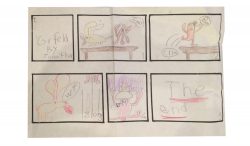
I was visiting my hometown of Essex Junction, VT during a break from college and ended up running into my high school art school teacher. I told her about how I had just been introduced to the world of zines by my partner at the time. I was obsessed with these intimate publications; obsessed with the connection that I felt with the creators through the tactility of the object, and obsessed with the wide range of topics that these self-publications covered. My former teacher suggested that if I was interested in hand-made publications, I should visit the Special Collections Library at the University of Vermont.
I contacted the library and they eagerly welcomed me to come in and view their collection of “artist books.” When they asked what I wanted to view, I was at a loss. I didn’t have experience with artist books, and was unfamiliar with who worked in that space. The head librarian curated a selection for me to view, and my life was changed.
In that afternoon, I was exposed to so many artists that were using the book as a medium to do some really revolutionary things. I poured over the highly tactile, meticulously constructed, and ingeniously novel books of artists like Barbara Tetanbaum, Lois Morrison, Margaret Kaufman, Karen Chance, Damara Kamanecki, and my favorite, Julie Chen. As I poured over these beautiful books, I felt something stirring in me and remember swearing an oath to myself that I wanted to use my creative energy to make books and tell stories with pictures.
I had always loved comics and enjoyed making them, but being inspired by artist books is what made me want to be a cartoonist.
What was your inspiration behind Pinball?
Doing a book about pinball was something that I was interested in since I first got into the game in 2010. I became obsessed with pinball alongside cartoonist and ultra-pal Alec Longstreth. We were so excited to share this newfound (for us) passion with other people, and we saw comics and heavily-illustrated prose as a way to do that. For five years we self-published a magazine about pinball called Drop Target Zine. Working on that zine gave us an incredible crash course in the history of pinball, but I knew that we had always just scratched the surface.
So, to answer your question, my inspiration to make this book was the hobby of pinball itself! Its history, its community, and the psychology of how the game works and why it is so enduring! I wanted to use the language of comics and a longer format to help tell the story of pinball, and in doing so, hopefully, reach new players and share my love and enthusiasm. The pinball community has been an amazingly warm and friendly place for me, and I’m passionate about getting new players and new voices involved.
What scene or panel sequence did you most enjoy drawing?
I have two answers for this question!
- Globally, I just love drawing pinball machines! There is a part of my brain that gets a lot of satisfaction out of drawing machines, buildings, and other things in perspective. Pinball machines have always been really relaxing for me to draw, and it’s a great exercise in managing detail. I often had to interrogate my decisions about why I was rendering a machine a certain way, and whether the level of detail I was providing was lifting the drawing and supporting the storytelling in that moment, or dragging it down.
At the end of the book I sum up my thesis about pinball, and what makes it such a novel entry in the history of American gaming. While doing so, I have some pages where I went all-out on the detail. I pulled the “camera” close to these very specific moments of certain games that I love. For the majority of the book, the pinball moments that I show are included to make a point, but some of these last drawings were just supposed to be capturing a mood. I felt free to not pick the most iconic games, or what the “best example” of some sort of era or mechanical device was. Pages like this are my love letter to pinball. I know that pinball aficionados are going to get it and be like, “that’s the ramp on Dr. Dude” and that makes me very happy.
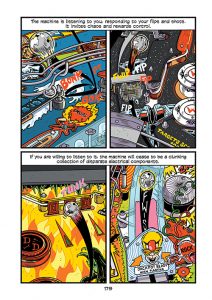
- There is a sequence near the middle of the book where I am talking about shaking pinball machines and how their shaking pinball machines change when their center of gravity is changed (adding legs to a machine). The sequence doesn’t contain jaw-dropping drawings, but it is a great example of how I used the artifice of the comics medium to help communicate the sensations involved in experiencing pinballs. Tilting and “shaking” panels were a great way to communicate the varying levels of motion that shaking different machines produces. This effect would have been much harder to relay just with words. I loved any time in the book where I could create a really interesting pinball/comics crossover moment.

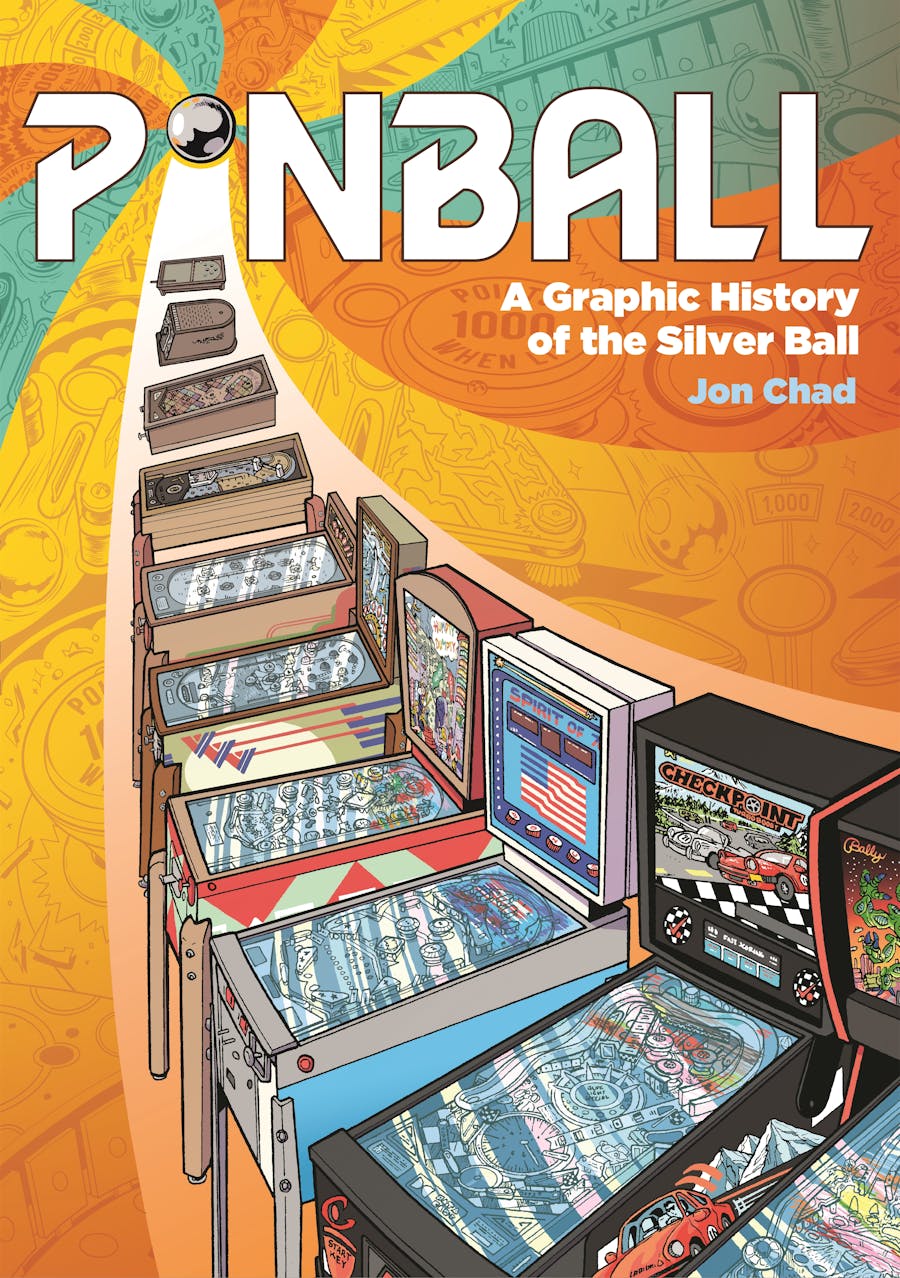 ABOUT THE BOOK
ABOUT THE BOOK
In this dynamic, nonfiction graphic novel, Jon Chad illustrates the little-known story of pinball—how it works and why it all matters in an age of special effects and on-screen gaming.
In 1976, champion player Roger Sharpe stepped up to a pinball machine in a Manhattan courtroom. The New York City Council had convened to consider lifting the city’s ban on pinball—a game that had been outlawed since 1942 for its supposed connections to gambling and organized crime. Sharpe was there to prove that, unlike a slot machine, pinball wasn’t a game of chance designed to fleece its players—it was a game of skill that required a measure of patience, coordination, and control. To prove his point, he proclaimed that he would launch his ball into the center lane at the far end of the playfield—much like Babe Ruth famously pointing to the fences. Sharpe pulled back the plunger and released, and the fate of this industry and art form hung in the balance.
Thus opens Jon Chad’s comprehensive graphic novel to the history of the captivating, capricious—and at times infuriating!—game of pinball. Tracing pinball’s roots back to the Court of King Louis XIV, through the immigrant experience of early 20th century America, the post-War boom and bust, right up to the present day, Chad charmingly ushers readers through the myriad facets of this most American of pursuits—capturing not just the history but also the artistry, cultural significance, and even the physics of the game.



